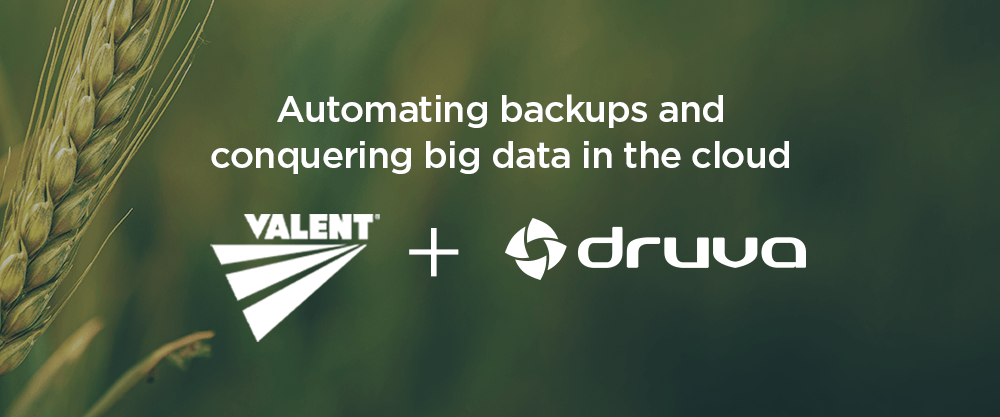Druva recently spoke with Erwin Eimers, CIO at Valent U.S.A., a leading agricultural technology firm. He’s been in high-tech and financial-sector IT for over 30 years, and he shared his opinions about a number of challenges — and opportunities — facing enterprise IT groups worldwide. Erwin will be part of an upcoming webinar, “The Data Exchange: Insights from Leaders & Peers,” on April 18.
Q: What’s the biggest challenge you face today as CIO of a large multinational enterprise?
EE: I think any CIO or IT manager will tell you they are dealing with unprecedented volumes of data that are growing exponentially. This big data is a blessing, there is so much potential for smart analytics, but we’ve also got to protect it and manage it. The challenge is to reliably do that while keeping costs flat. “Do more with less,” as usual!
Q: How have you coped with this?
EE: The shared-services model that cloud providers like AWS and as-a-service companies like Druva offer is clearly the way to go. Our parent is Sumitomo, a Global Fortune 500 company, but I also guide small Valent affiliates who don’t even have permanent IT staff. Because it’s intrinsically scalable, the same shared-services model covers the whole spectrum. Sumitomo’s IT group doesn’t want to spend time on what should be automated, one-click processes like backups and the smaller companies don’t have the resources to spend time on it, though it’s no less important.
Q: How do shared services keep costs flat?
EE: Well, look at the Druva. It’s cloud-native and based on AWS, so right there you’re eliminating on-premises infrastructure, a big capital expense. The fact that it’s SaaS means there’s way less IT overhead, updates are automatic and IT isn’t maintaining software. For example, end users can restore their own files, backups can be created in just a few clicks, and everything can be managed through a single, unified view.
Q: What are some other benefits of Druva’s approach?
I think Druva, as well as AWS, have definitely furthered this consumerization of IT, where a customer can self-service without having specialist skills. Druva gets enterprises of all sizes up and running quickly, and the enterprise IT groups don’t need years of experience and training courses with the product. The pay-as-you-go subscription model is an important part of this consumerization too. People want to pay for what they use, no more.
But there’s more going on here. When backups are automatic and restores are easy, what are you paying for? If you think about it, you’re getting a powerful disaster recovery/business continuity solution built-in. And Druva also does a remarkable amount of data classification, such as helping us detect anomalies to prevent ransomware. And I believe that this data classification has a huge potential for analytics applications beyond security and recovery. If you’re backing up data for multiple business-process reasons, you’re getting real value out of that storage.
Next Steps
- Register for our upcoming webinar with Erwin, “The Data Exchange: Insights from Leaders and Peers,” on April 18.
- Discover more customer stories and how others are leveraging the Druva Cloud Platform.
- Find out more ways Druva + AWS are working together to protect and manage enterprise data.
